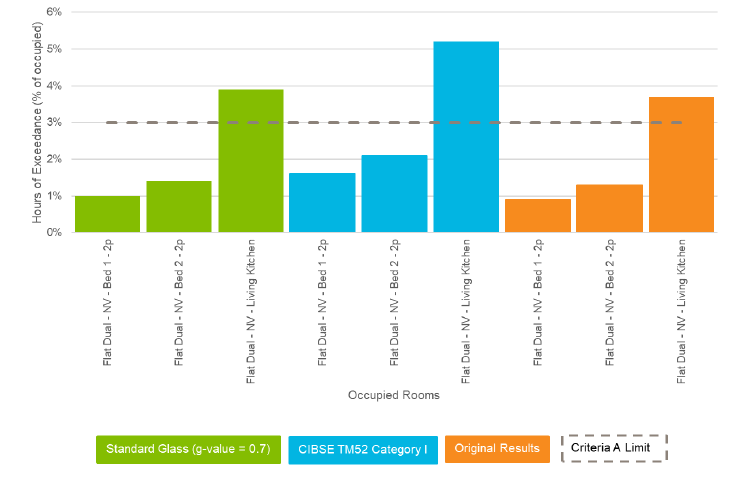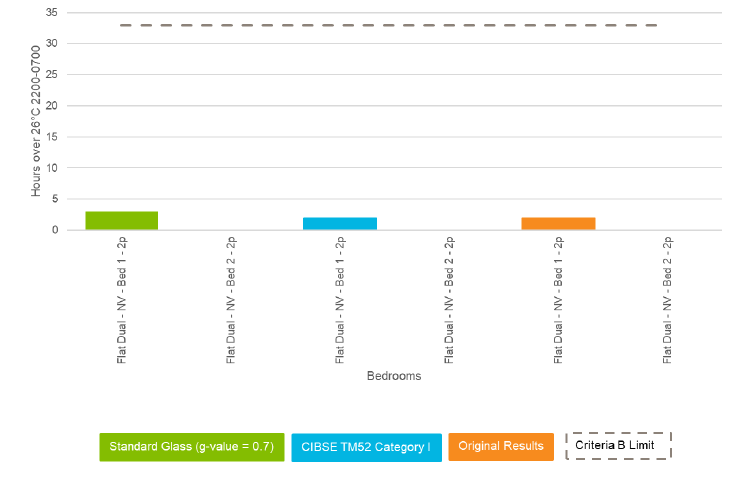Building regulations - overheating risk in new homes: research report
Research into overheating risk in new homes. Produced in support of proposed improvements to energy standards for new buildings within Scottish building regulations in 2021.
This document is part of a collection
7. Addendum
7.1 Two additional CIBSE TM59 assessments were carried out using dynamic thermal simulation modelling, focusing on the naturally ventilated dual aspect flat.
i) The CIBSE TM52 building type was changed from Category II to Category I. Category I assumes the building has a high probability of being occupied by vulnerable and fragile persons[4]. It results in Criterion A being more stringent.
ii) The glazing specification was changed from a U-value of 0.8W/m²K and a g-value of 0.57 to a more common double-glazing standard, with a U-value of 1.4W/m²K and a g-value of 0.7.
7.2 The following figures show how the naturally ventilated dual aspect flat performs against the CIBSE TM59 Criterion A and Criterion B based on the outputs from the modelling. The original results for the flat are included for comparison.
7.3 Both modifications increased the extent that the living space failed CIBSE TM59 Criterion A. The modification of the glazing specification had a limited increase on the hours of exceedance. However, the change in building category had a more significant impact and may be expected to require greater mitigation measures to address. Whilst the bedrooms increased their hours of exceedance, in both instances this was not enough to result in any bedrooms failing CIBSE TM59 Criterion A.
7.4 The change in CIBSE TM52 building category does not impact the CIBSE TM59 Criterion B results. The change in glazing specification has a minor increase in the number of hours of exceedance, while still passing Criterion B.

Figure 5: Percentage overheating hours – CIBSE TM59 Criteria A

Contact
Email: buildingstandards@gov.scot
There is a problem
Thanks for your feedback